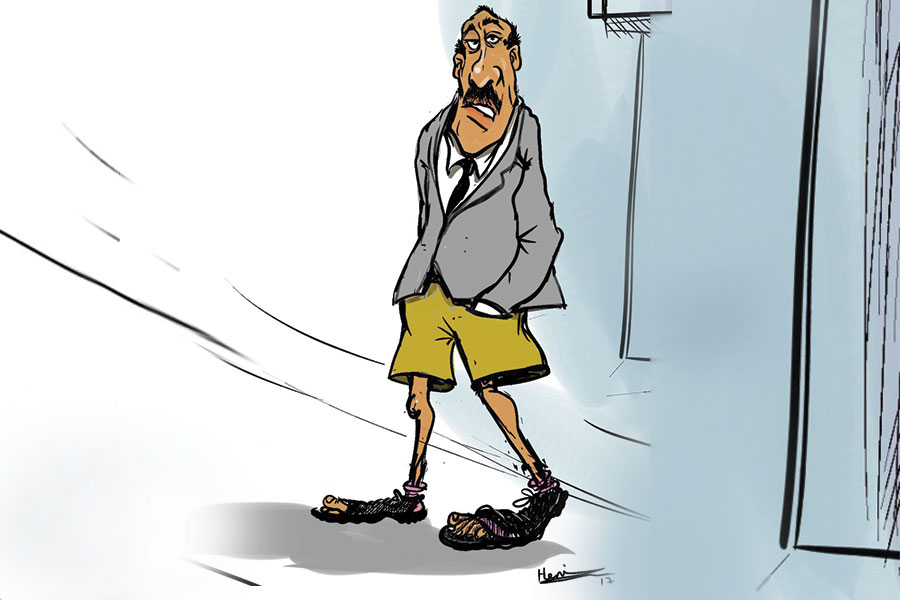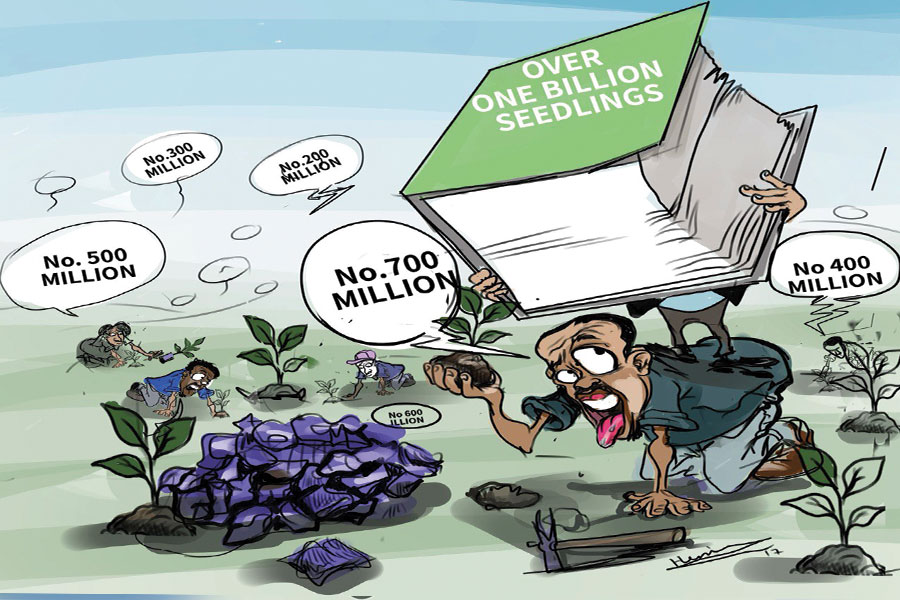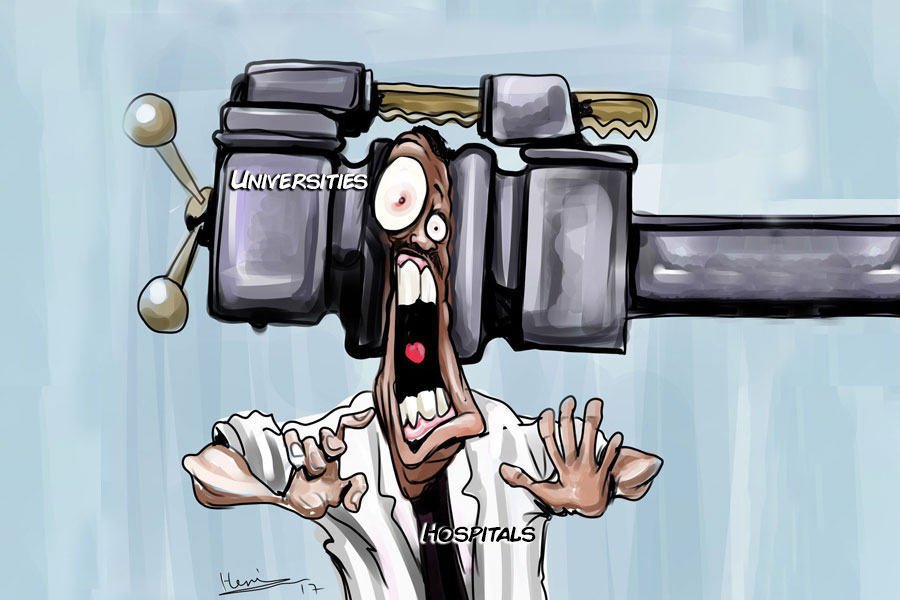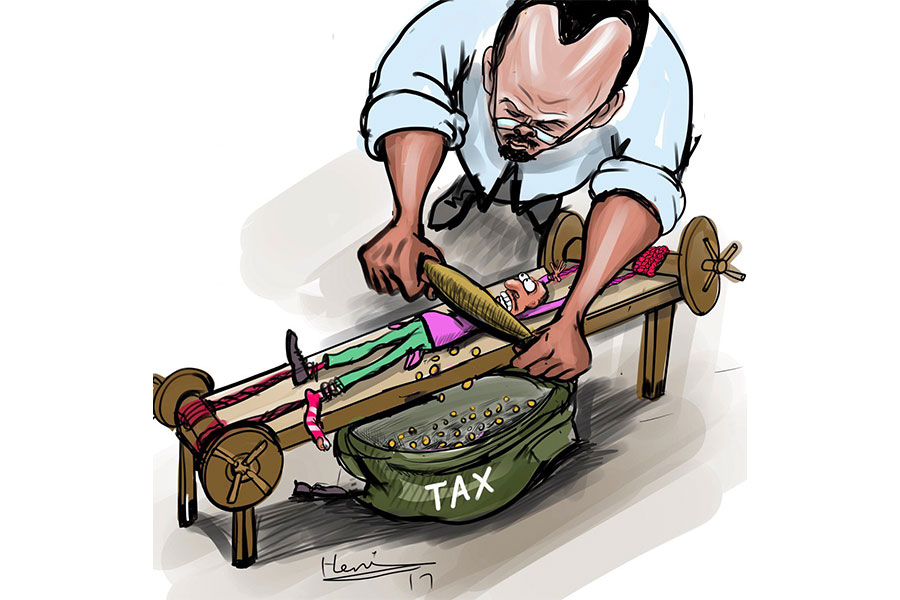
My Opinion | 133315 Views | Aug 14,2021
Aug 2 , 2025.
The scenes have become all too familiar. Torrents of rain batter the city, transforming boulevards into brown rivers, swallowing vehicles, drowning commerce, and mocking the authorities' infrastructure blueprints. While the skies may clear, the wreckage lingers in waterlogged warehouses, broken engines, and families left to mop up in frustration. On July 24, 2025, a flash flood drowned the OLA gas station and café across from St. Estifanos Church, on Menelik II Avenue. Its staff watched helplessly as muddy water consumed inventory and disabled the manager's compact car. Repairs totalled 115,000 Br, none of which was covered by insurance. The story is far from unique.
Across Addis Abeba, motorists drive with the anxiety of men navigating minefields. In low-lying intersections and chronically unmaintained routes, such as those in Bulgaria or Summit areas, a single misjudged puddle can spell catastrophe. Electric vehicles, designed for clean roads, not the turbulent aquatic obstacle courses the city has become, fare worse. Despite a population exceeding five million (unconfirmed figure given a two-decade national census drought), the capital lacks resilient infrastructure to match its urban ambitions. Roads act as drains. Riverbanks double as dumping grounds. Concrete sprawls where floodplains once absorbed rainfall. And when Addis Abeba floods, as it often does, there are few places for the water to go.
Municipal authorities acknowledge the problem. They disclosed the establishment of a special task force and the construction of 64 floodwalls alongside the ambitious Riverside Project, which promises revitalised riverbanks, walkways, and green spaces. However, the city’s hydrological scars run deeper than these surface remedies. Behind the Ghion Hotel, the offices of the Riverside Project themselves fell to the floods, workers wading through sludge and ruined paperwork. On major arteries like the Ring Road and in rising neighbourhoods such as Kotebe and Betel, headlights flicker under knee-deep water. AACRA crews report 483Km of drainage works and pipelines expanded from 60cm to one metre. Still, its officials blame concrete invasions into flood buffers. Hydrologists, less diplomatic, call the entire drainage design infeasible, unfit for the capital’s uneven elevation and fragmented urban structure.
The data support their concern. The city receives nearly 70pc of its 1,400mlt annual rainfall in four months. Drought seasons bake the soil, making it water-repellent. When the rains come, runoff accelerates downhill. Rivers like the Kebena, Bantyeketu, and Aqaqi, once the city’s lifeblood, are now choked with refuse and sediment. In districts like Kolfe Qeranio, riverbeds have become dumping grounds. The Little Aqaqi is now an “open sewer.” The policy response has relied heavily on emergency repairs and task forces, yet enforcement of zoning laws, such as the 30mts setback for construction from rivers, remains patchy. Officials speak of progress. Engineers draft plans. Foreign partners, such as the Japanese, lend expertise. But as café owners and taxi drivers face ruined livelihoods and automotive bills, faith in top-down remedies wears thin.
PUBLISHED ON
Aug 02,2025 [ VOL
26 , NO
1318]

My Opinion | 133315 Views | Aug 14,2021

My Opinion | 129827 Views | Aug 21,2021

My Opinion | 127642 Views | Sep 10,2021

My Opinion | 125190 Views | Aug 07,2021

Aug 9 , 2025
In the 14th Century, the Egyptian scholar Ibn Khaldun drew a neat curve in the sand....

Aug 2 , 2025
At daybreak on Thursday last week, July 31, 2025, hundreds of thousands of Ethiop...

Jul 26 , 2025
Teaching hospitals everywhere juggle three jobs at once: teaching, curing, and discov...

Jul 19 , 2025
Parliament is no stranger to frantic bursts of productivity. Even so, the vote last w...